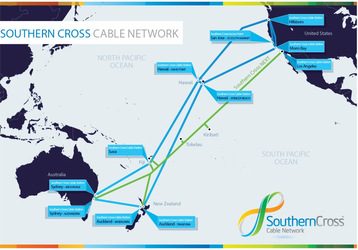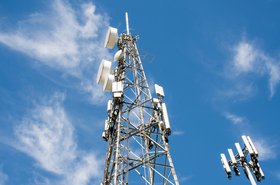Subsea cable provider Southern Cross and FiberSense have announced they will partner to launch subsea cable monitoring across the Southern Cross Cable Network.
In a recent LinkedIn post, Fibersense said it would use its DigitalMarine monitoring technology to provide 24/7 tracking of Southern Cross’ subsea infrastructure, in particular across the New Zealand portion of its Southern Cross Cable Network (SCCN).
SCCN spans 30,500km and connects Australia, Fiji, New Zealand, and the US.
The system will monitor both shore-ends and the terrestrial network connecting the two landing stations, detecting seabed interaction events, cable exposures, threat detection, and prevention.
“We are extremely pleased to collaborate with FiberSense and integrate the distributed fiber sensing service into a live traffic carrying fiber via the proprietary FiberSense Marine Interface Unit, where sensing occurs outside the frequencies used for data traffic wavelengths, “ said Dean Veverka, director of networks and VP operations for Southern Cross.
Through the use of FiberSense’s Marine Interface Unit, cable operators no longer need to reserve an unused or dark fiber core for monitoring.
Mark Englund, founder and CEO of FiberSense, added: “In partnership with SX, we now have delivered a series of world firsts in subsea networks. We are looking forward to further innovations in subsea that balance increased resilience and situational awareness with industry-leading fail-safe architectures.”
Southern Cross intends to roll out the technology across its network in Australia, New Zealand, and the US by the end of Q3 this year.
Southern Cross Cable Network also owns the NEXT cable, which connects Australia, Fiji, Kiribati, Tokelau, New Zealand, and the US.
The company was founded in 1997 by Telecom New Zealand, Optus, and MFS Globenet. According to its site, it is owned 50 percent by Spark (formerly Telecom New Zealand), 40 percent by SingTel (a Singaporean operator with other cable investments including SEA-ME-WE 5, which acquired Optus) and 10 percent by Verizon Business (which ended up as owner of Worldcom, that bought MFS Globenet). However, in 2018, Australian operator Telstra agreed to buy a 25 percent stake in SCCN.
Earlier this year, the Martoc Project launched an autonomous drone to detect subsea cable problems at depths of 3000m. Members of the Martoc consortium include RTSys, Orange Marine, Geophysics, and ENSTA Bretagne.







